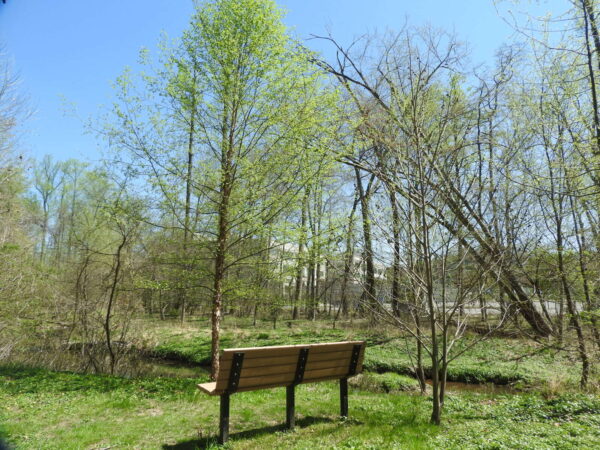
Vienna’s tree canopy may be shrinking, but the trees still standing are actually doing quite well, a recently released town-wide inventory found.
About 88% of the 7,224 trees on public land examined by PlanIT Geo are in “fair” or “good” condition, the consultant told the Vienna Town Council when presenting its findings on June 20.
“I’ve looked at a lot of data across a lot of projects, and I don’t think I’ve seen one as good of health as Vienna’s trees are in,” PlanIT Geo Director of Field Operations TJ Wood said, decreeing the town’s tree population to be in “very good health” overall.
That does still leave roughly 722 trees that were found to be in poor condition or dead, according to the inventory, which was initiated based on a recommendation by an urban tree canopy assessment that the town received last October.
Focused on trees on public property, including any within the street right-of-way and parks, the inventory identified tulip poplars as the species with the highest mortality rate at 12 dead trees. The species with the biggest showing in the “poor” category was red maple, which isn’t surprising when it constitutes 16.6% of the total inventory, Wood said.
He reported that, while Vienna has “a very diverse urban forest overall” with 162 unique species, the top 10 most common species make up almost 51% of the population, led by the 1,200 red maples recorded by PlanIT Geo.
“There’s a lot of room to diversify tree plantings and try new species out,” Wood said.
In another sign that Vienna could use some more trees, less than 30% of its trees have a diameter of 1 to 6 inches, suggesting the town is “lacking in new plantings.” Wood added that the town could get close to the ideal rate of 40% if it puts a tree in all 1,222 sites that the inventory identified as suitable for plantings.
Despite the overall healthiness of Vienna’s urban forest, the inventory says 3,968 trees, or 65% are in need of some maintenance. The majority are recommended for some kind of pruning to remove dead wood and hanging limbs or prevent them from growing into utility lines, signs and other infrastructure.
However, 290 trees were deemed to be at moderate risk, meaning they should be revisited at least once a year, and there are 25 high-risk trees.
“I would recommend anyone visit immediately and get another set of eyes on them, decide whether those need to be removed, or if there is a mitigating factor that can be done to reduce that risk to public safety,” Wood said, pointing to a red maple with a split trunk that could fall on a street or sidewalk as an example of a high-risk tree.
Vienna Park Maintenance Superintendent Jeremy Edwards noted that there are still some trees in parks, including Northside and Wildwood, that haven’t been examined and added to the inventory yet. The survey didn’t include trees on private property and along the Washington & Old Dominion Trail, which isn’t town-owned.
All of the data collected is now publicly available through a TreePlotter database that town staff will be able to update in real time.
Last year’s tree canopy assessment found that the town’s canopy has declined by 163 acres, or 13%, since 2011. In January, the town council designated improving the canopy as a top priority for 2023, and Vienna is currently considering an ordinance that would require developers to preserve trees, instead of just replacing ones they cut down.
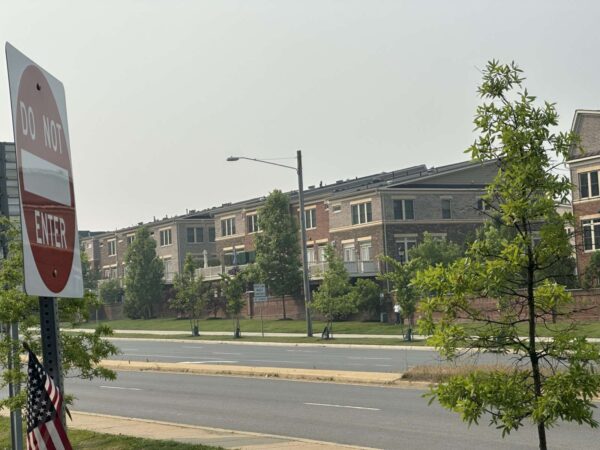
In an effort to reduce heat islands in vulnerable communities, the Fairfax County Department of Public Works and Environmental Services has applied for millions of dollars in grant funding to establish a street tree planting program.
The county will use its Vulnerability Index to identify communities in need of the program, according to county staff.
The Fairfax County Board of Supervisors approved the department’s request on Tuesday (June 6) to apply for a $11.5 million Inflation Reduction Act Urban and Community Forestry (UCF) grant from the U.S. Forest Service.
“The grant period is five years from the award date which is anticipated to be October 2023,” the board meeting package said.
Department of Public Works and Environmental Services spokesperson (DPWES) Sharon North told FFXnow the department is proposing to plant 1,000 trees over a five-year period. Although the county is looking at vulnerable communities, she said “no decision on the grant recipients will be made until October.”
The Forest Service announced the funding opportunity back in April. The UCF program received $1.5 billion under the Inflation Reduction Act to support urban tree planting and forest planning and management in at-risk communities.
“The Resilient Fairfax Plan notes that 91 percent of vulnerable households are in areas identified as having a significantly high urban heat island effect and that vulnerable populations are more likely to be impacted by extreme heat,” the package said.
Factors considered by the county’s vulnerability index include household income, education, English proficiency, health insurance and the percentage of the population that owns a home or vehicle.
If the county is awarded the funds, the program will also promote tree planting through partnerships with the Virginia Department of Transportation, the Fairfax County Park Authority, Fairfax County Public Schools, and nonprofit organizations.
The county also identifies specific activities that will receive the funding:
- identifying areas in the county that are heat vulnerable low tree canopy and/or areas where green infrastructure would provide additional community and resilience benefits
- planting and maintaining up to 5,000 native and/or climate-resilient street trees over five years in neighborhoods and within the right-of-way and on public property
- educating and engaging the public on the benefits of green spaces and trees
- expansion of a green workforce to maintain existing and new street trees.
The county launched a pilot program in 2021 that provides free trees to residents of areas with minimal tree canopy coverage. The program initially focused on the Richmond Highway corridor but was expected to shift to Bailey’s Crossroads this year.
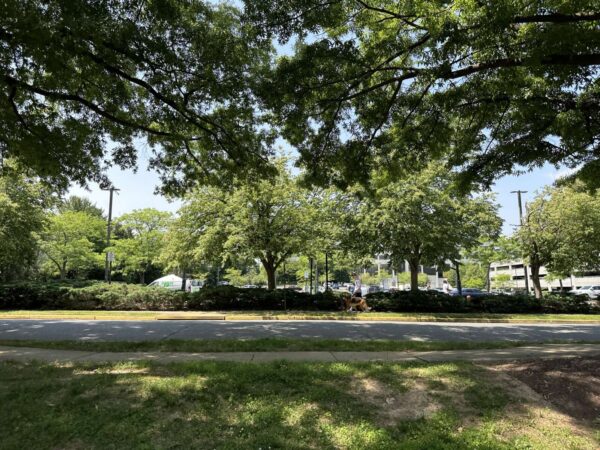
Fairfax County’s parking lots and streetscapes could look a little greener.
At a land use policy committee meeting on May 16, planning staff proposed a new update to the county’s landscaping and screening ordinance — the first major change in 40 years — that would make developers add more green landscaping to more parking lots and street frontages.
For parking lots, the current ordinance requires trees to be installed at any surface parking lot with 20 spaces or more. The new ordinance could expand that requirement to any lot with 10 parking spaces and increase the amount of tree coverage from 5% to 10%.
New parking garages, meanwhile, would be required to have 10% of their top decks covered with shade, although utilizing solar canopies could lead to a reduction in that percentage.
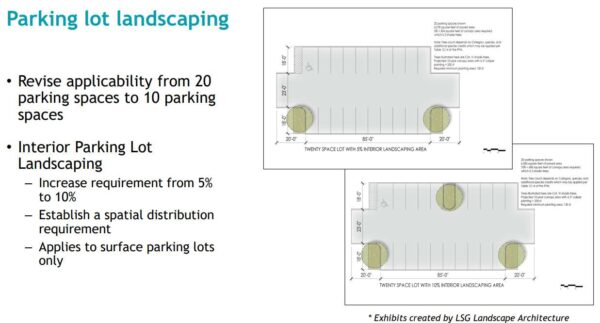
The ordinance also introduces “street frontage landscaping” — requiring developers to provide trees on private property provided they’re along private or public streets, not internal drive aisles. Single-family dwellings would be exempted.
One small but meaningful change would also adjust the types of trees seen in these green spaces, as it turns out Fairfax County’s previous specifications weren’t evergreen.
“When it comes to transitional screening a lot of waivers are applied for to use existing vegetation because they have to have 70% evergreens and that’s not common in Fairfax County,” Sara Morgan, a planner with the Department of Planning and Zoning, said. “This allows us to review [developments] on a case by case basis as we want to further encourage the use of existing vegetation, allowing you to have a mix that is different than [the ordinance] today if you retain existing vegetation.”
Similar to the zMOD update approved in 2021 — then reversed and reinstated earlier this year — county leadership said the landscaping and screening ordinance update is a good step forward on fixing some outdated code.
“It’s been 40 years since we updated these,” Board of Supervisors Chairman Jeff McKay said. “I think this is overall very, very good.”
The board approved new tree canopy standards earlier this year with the hope of encouraging private developers to plant more street trees in the public right-of-way.
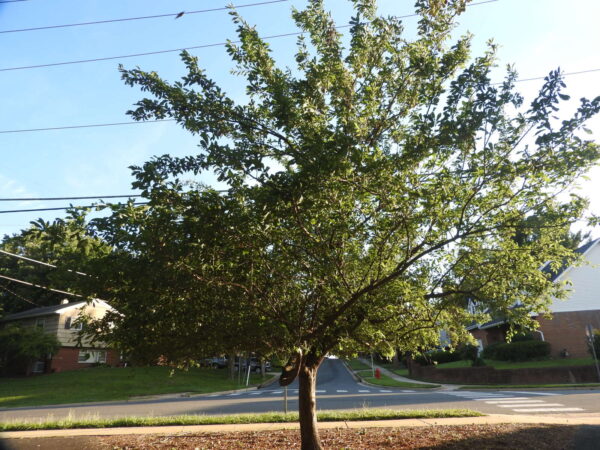
The Town of Vienna is ready to turn over a new leaf in its commitment to tree plantings and preservation.
In the hopes of reversing a significant decline in canopy coverage over the past decade, staff proposed a tree conservation ordinance to the Vienna Town Council last week that would require developers to preserve existing trees when possible.
An ordinance would put the town in line with Fairfax County, which has had conservation rules since the General Assembly extended that authority to Northern Virginia localities in 1990. Right now, Vienna only requires that developers replace eliminated trees to meet canopy standards.
“This is the kind of thing that’s so big, so impactful that I would like to hear from the community on and…is absolutely worthy of a public hearing. It’s a big idea that could have big results,” Councilmember Ed Somers said after the May 8 presentation.
Current canopy requirements vary across zoning districts, but for the single-family residential lots that dominate most of Vienna, builders must provide enough trees to cover at least 20% of the lot after 20 years.
A conservation ordinance would raise that 20-year standard to 25%, require developers to “make an effort” to preserve any trees likely to survive, and let developers unable to meet their on-site canopy requirement contribute to a fund for trees plantings elsewhere in the town.
“If you can’t meet your tree requirements through tree preservation, you supplement that through tree planting, as opposed to what Vienna has right now, where a builder can cut down all the trees if they want and then just replace them with new trees later,” Brian Land, a Vienna resident and Kirkland & Ellis LLP attorney, explained.
The town hired Kirkland & Ellis and the Ramboll US Corporation, a consulting company, in September 2020 for a pro bono project to analyze its tree program and those of other jurisdictions in Virginia.
In addition to a conservation ordinance, the consultants recommend that Vienna create a tree commission to supplement its Conservation and Sustainability Commission and track and publish plantings data on an annual basis.
Town staff have already started to make progress on the tracking recommendation, thanks to a town-wide tree inventory now underway.
Building off an urban tree canopy assessment released in October, the now-complete first phase of the inventory identified 8,640 sites in town that either have a tree or are suitable for future plantings. Of the 7,224 existing trees, 306 were dead, and 689 others were in poor condition, town staff told the council.
Conducted by consultant PlanIT Geo, the project’s second phase will consist of parks that weren’t already surveyed. A final report is expected to be presented to the town council on June 12.
The inventory data, including the health and species of each tree, is being assembled into a dashboard that staff will be able to update in real time and that will be accessible to the public through the town’s website.
While the inventory will provide valuable information, more staff and money are needed to actually plant and maintain trees, Vienna Park Maintenance Superintendent Jeremy Edwards said.
According to Edwards, the town’s annual tree maintenance budget has jumped from $30,000 just two years ago to $80,000 this year, and the council approved $250,000 in federal Covid relief funds for a street tree replacement project on May 1.
However, Vienna has no staff dedicated to tree maintenance, and with hundreds of trees in need of removal or pruning, those funds start to look pretty paltry.
“If trees are important, which I think they are, we do need to build a staff of competent workers that can not just cut trees, but know how to prune them, how to maintain them so we can manage them much better going forward,” Edwards said. “A lot of people can just cut. That’s what we’ve been doing so far, but knowing the proper cuts, that’s the skilled staff we need right now.”
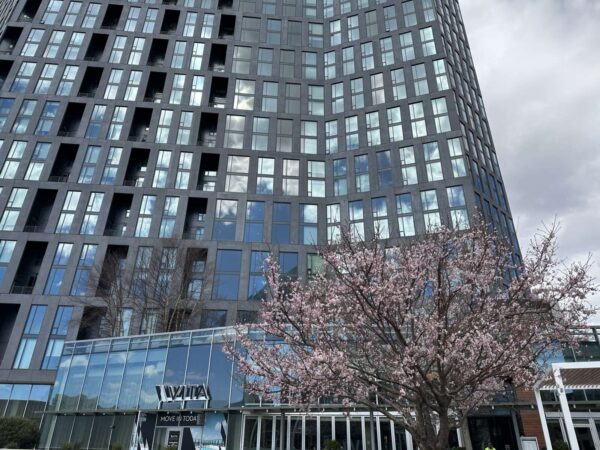
Updated at 11:35 a.m. on 4/27/2023 — With rain in the forecast tomorrow (Friday), the cherry tree plantings have been postponed to May 6, the Tysons Community Alliance announced today.
Earlier: This year’s cherry blossom season has come and gone, but in Tysons, the seeds for future flowers are about to take root.
The Tysons Community Alliance (TCA), the nonprofit community improvement organization formed to replace the Tysons Partnership, has partnered with the National Cherry Blossom Festival to obtain and plant 17 cherry trees around the urban center.
The trees will be planted at Tysons Corner Center and Scotts Run this Friday (April 28), which is not coincidentally also Arbor Day.
“We chose cherry trees as our first official planting in Tysons because of their beautiful blooms and rich history in the region,” Tysons Community Alliance interim CEO Rich Bradley said. “Moreover, by partnering with the National Cherry Blossom Festival to plant these trees, it allows us to be an official part of what has become a truly regional celebration and one of the largest festivals in the country.”
About 50 volunteers are needed for the plantings, according to the TCA. They can participate in one or both of the two scheduled shifts:
Shift 1
- Location: Scotts Run, 1651 Old Meadow Rd, Tysons, VA, 22102
- Volunteer arrival time: 7:30 a.m.
- Training session: 7:45 a.m.
- Planting begins: 8 a.m.
Shift 2
- Location: I-495 pedestrian bridge (Tysons Corner Center side)
- Volunteer arrival time: 11:30 a.m.
- Training session: 11:45 a.m.
- Planting begins: noon
An official ceremony to celebrate the plantings is scheduled for 9 a.m. at the Scotts Run trailhead.
The Arbor Day event extends a collaboration between the TCA and the festival that began earlier this month with the first annual “Pedal with Petals” family bicycle ride. The partnership was announced at the alliance’s official launch in February.
Held from March 20 to April 14 this year, the National Cherry Blossom Festival works with the nonprofit Casey Trees to plant trees around the D.C. area. The TCA will be responsible for maintaining the new trees in Tysons going forward, according to a spokesperson.
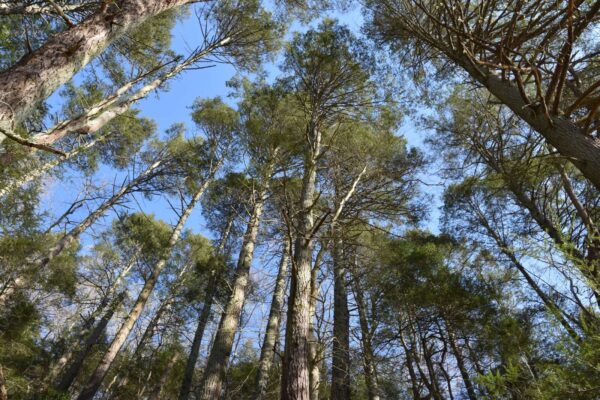
About 20 acres of eastern hemlock trees rooted to the Bull Run River banks in Clifton will be formally recognized tomorrow (Tuesday) as likely the oldest trees in Fairfax County.
Believed to be at least 250 years old, the trees in Hemlock Overlook Regional Park are the first stand in the county and only the second in Northern Virginia to join the Old Growth Forest Network, a national nonprofit that aims to identify and protect the oldest known forests in every county in the U.S.
The Northern Virginia Regional Park Authority (NOVA Parks) will celebrate the milestone at 2:30 p.m. tomorrow by unveiling a permanent sign explaining the forest’s significance.
The ceremony will also include an early Earth Day commemoration. Fairfax County Board of Supervisors Chairman Jeffrey McKay, Springfield District Supervisor Pat Herrity, and other local officials are expected to attend.
“We want the people hiking along the trail to not just have a great experience hiking…but also learn something about the interesting and unique environment that they’re in,” NOVA Parks Executive Director Paul Gilbert said. “…This is a very unusual thing to have an old growth forest in an area that has been heavily forested and developed for over 150 years, and it certainly fits with the mission of NOVA Parks to conserve these areas and to educate the public about these areas.”
With its induction, Hemlock Overlook follows in the footsteps of Arlington’s Glencarlyn Park, which had a 24-acre portion added to the Old Growth Forest Network in 2o15.
Founded in 2012 by ecologist and author Joan Maloof, the network has grown to over 190 forests across 32 states. All included forests have protections in place against logging and are publicly accessible, though there are separate designations for private and smaller community forests.
Gilbert says NOVA Parks was aware that Hemlock Overlook had a “very old forest area,” but the Old Growth Forest Network identified it independently and then reached out to the authority.
The nonprofit works with county coordinators in local communities to help it identify potential old growth forests that are publicly accessible, according to Brian Kane, the OGFN’s Mid-Atlantic regional manager and community outreach manager.
The organization had gotten seven or eight nominations in Fairfax County, including for some stands along George Washington Memorial Parkway, but the Hemlock Overlook trees ultimately stood out.
“It’s really kind of remarkable this is standing there in busy Fairfax County,” Kane said. “…We’re absolutely thrilled this is happening.” Read More
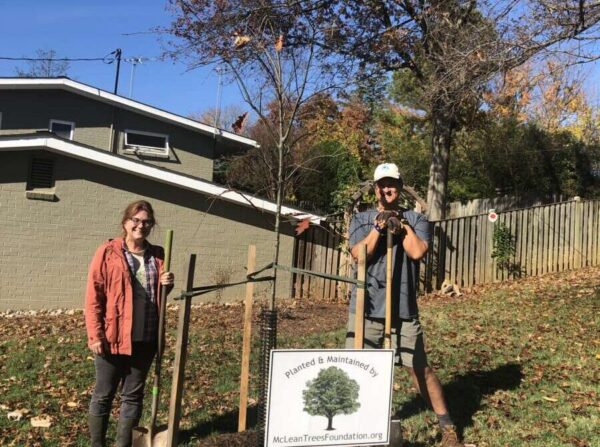
With the first day of spring drawing ever closer, the McLean Tree Foundation is gearing up for another season of sprucing up the area’s tree canopy.
For a $100 fee, the local nonprofit is offering to help McLean homeowners plant growing native trees in their yards as part of its Neighborhood Tree Program, which is now in its ninth year.
“Native trees increase biodiversity, enhance ecosystems, provide shelter for wildlife, improve our health and the environment, increase property values, and reduce heating and cooling costs for homeowners,” MTF Chairman Carol Wolter said in a news release. “In short, trees contribute to our well-being!”
Launched in 2014, the Neighborhood Tree Program is the only tree-planting initiative in Fairfax County that’s specifically aimed at homeowners, according to the foundation.
In addition to selecting and delivering a 6 to 12-foot-tall tree, volunteers help with the actual planting, give residents information about how to take care of the tree, and check in after a few months to see how it’s doing.
Plantings occur in the spring and fall, but applications are accepted throughout the year, MTF board member Steve Lagerfeld says. Since it began, the program has added 70 trees in McLean.
The McLean Trees Foundation originated in 1964 as a McLean Citizens Association program whose goal was to plant 300 dogwood, oak and maple trees, according to the foundation’s website.
Using proceeds from a community-wide newspaper recycling campaign to fund tree plantings, the program evolved into a permanent MCA committee in 1980 and incorporated as a standalone organization in 2004.
After the recycling campaign ended in 2014, the foundation says it’s now entirely supported by grants and donations. On top of the Neighborhood Tree Program, MTF has tree sponsorships where donors of $500 or more can get one planted at a public park.
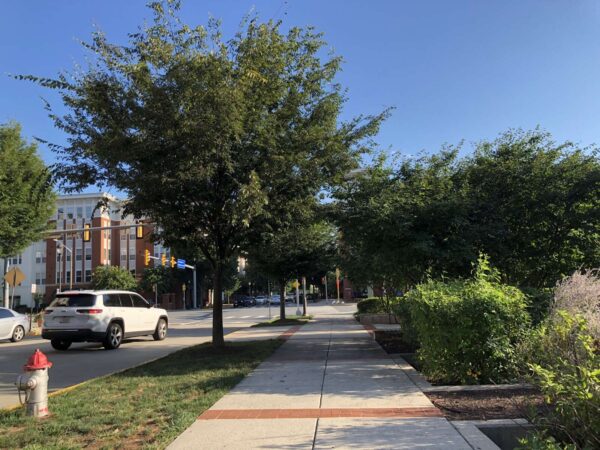
As Fairfax County pines for a better tree canopy, county staff is hoping a credit program expansion can spruce up the area’s street trees.
While developers could already a 10-Year Tree Canopy Credit for trees built on-site, trees in the public right-of-way aren’t eligible despite positive impacts on the environment and site development. At a meeting last week, the Fairfax County Board of Supervisors raised no objection to an information item expanding eligibility to include trees.
The change in urban design guidelines across Fairfax County makes street trees eligible for that 10-Year Tree Canopy Credit and implements a new set of standards, along with minimums and maximum tree sizes, for street trees.
“These changes give the Urban Forestry Management Division (UFMD) authority to have long-term oversight of street trees that are included in ten-year tree canopy calculations,” the agenda item said. “Perpetual maintenance and replacement agreements by the applicant are required to due to the potential for the removal of trees in rights-of-way and easements.”
Per a county news release, the new guidelines apply to developments in more urbanized activity centers:
- Tysons Urban Center
- Annandale
- Bailey’s Crossroads/Seven Corners
- Huntington
- Lake Anne
- Lincolnia
- McLean
- Merrifield
- Reston
- Springfield
- West Falls Church
Those areas tend to some of Fairfax County’s most notable “heat islands” and tend to be areas with lower area median incomes than the county average, according to the county.
“The result is intended to increase the number of street trees and associated tree canopy to improve environmental, social, and economic outcomes,” the agenda item said. “Trees planted will be monitored for success and adjustments to the planting details will be made as necessary.”
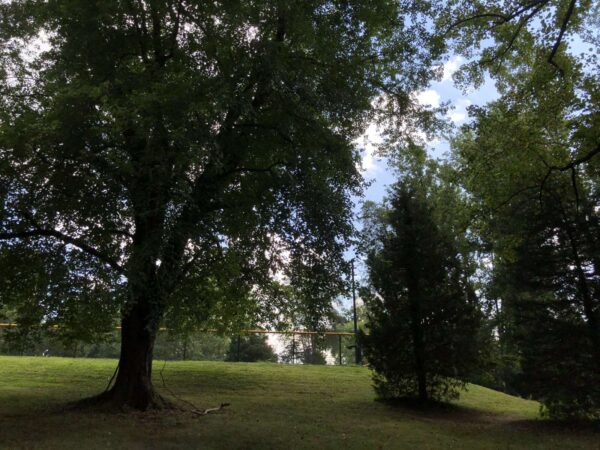
The Vienna Town Council is in agreement that it must finish rewriting the town’s zoning code by the end of 2023, but that’s where any unanimity on priorities for the coming year ends.
At its first regular meeting of the year on Monday (Jan. 9), the council voted 4-3 to set four top priorities for 2023: complete Code Create Vienna, develop a parks master plan, review the town’s noise ordinance, and explore ways to improve the local tree canopy.
While everyone agreed those initiatives are important, the town’s first zoning overhaul in 50 years is the only one that all members felt should be at the top of their to-do list.
“I agree with this in concept, but when I look at this list, I do question whether this is representing what the people in town would want as their top four priorities,” Councilmember Nisha Patel said of the proposal from her colleague, Ray Brill.
She called prioritizing Code Create “a no-brainer” but wasn’t sold on tree preservation as a top issue compared to traffic or vehicle break-ins, which get more resident complaints.
A report presented in October found that Vienna has lost approximately 163 acres of tree coverage since 2011.
The council discussed potential priorities for the next year at an almost four-hour-long conference session on Dec. 12, but the need to finish the zoning overhaul after more than two years of work was the only suggestion to get unanimous support, according to Mayor Linda Colbert.
The parks master plan will include a decision on long-term uses for the former Faith Baptist Church property that the town bought in September 2020. The site is temporarily housing the police department, which hasn’t moved into its new station months after the ribbon-cutting.
The town’s noise ordinance was opened up for review in July after years of resident complaints about violations from business and construction activities.
Colbert and Councilmember Ed Somers joined Patel in her wariness of designating top priorities without seeking public input on what exactly they should be.
“I know probably a lot of us support each other’s [suggestions] certainly, even if we didn’t rank them in the top four,” Colbert said. “I don’t think it would be responsible for us to vote on four priorities when we didn’t have that discussion in an open meeting.”
Attempts to postpone a vote until after a public hearing or to only approve Code Create as the council’s top priority failed, as other members countered that setting clear priorities would make the town government more efficient.
Councilmember Steve Potter said that a lack of focus has been a recurring issue for the council since he was first elected in 2019.
“We have public hearings, we have the ability of people to send in their concerns, and that can’t be ignored,” he said. “If we continue down this path, we are going to have the same problem that we’ve had before. We start something and it gets interrupted, we lose it, we go back to it later, and that is no way to run a business or an organization of any kind.”
Brill’s approved motion stressed that the designated quartet of priorities won’t preclude the council from addressing other issues or interfere with time-sensitive business, such as the annual budget cycle.
“We become more efficient rather than sort of kicking the can down the road on some issues that we’ve been dealing with for years,” Brill said. “When we focus, we can get them done, and we open up opportunities to get more done. This is a benefit to the town, to the residents, and we can do things in some ways like we’ve never done before.”
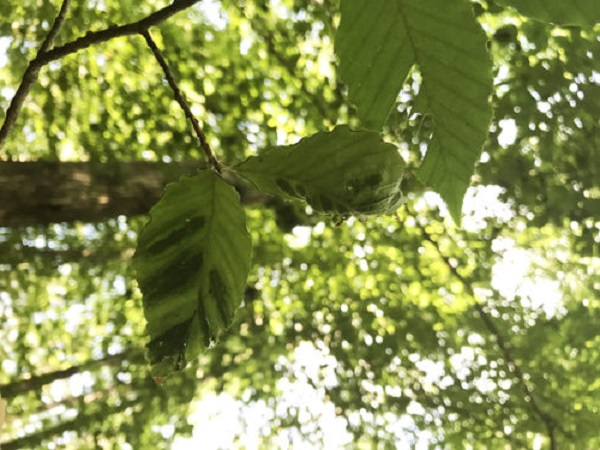
A new tree disease has been detected in Fairfax County, threatening one of the region’s most common trees.
County officials have confirmed, in the fall, they found that a number of American beech trees in three parks in Fairfax County were infected with beech leaf disease (BLD). The parks include Burke Lake Park, Hemlock Overlook Park near Clifton, and Fairfax Station’s Fountainhead Park.
The disease causes the leaves of beech tree saplings to develop dark green stripes in the veins as well as potentially puckered, cupped, or distorted leaves. In more mature trees, it can result in reduced foliage.
It can be fatal to the trees, causing them to possibly die within six to 10 years.
BLD is somewhat mysterious, in that officials and researchers at the county’s Urban Forest Management Division (UFMD) are still trying to figure out exactly how it spreads. There is also no cure.
“Good tree care, including proper mulching and watering during droughts, may be helpful,” the county’s Department of Public Works and Environmental Services (DPWES) said in a press release. “There is ongoing research underway to learn more about BLD and how to effectively treat it.”
The disease doesn’t affect humans, animals, other tree species, or yard plants. It hasn’t been detected anywhere else in the county at the moment besides the three noted parks, DPWES spokesperson Sharon North confirmed to FFXnow.
The county is asking any residents who spot a tree they believe might be infected to report it to pestmail@fairfaxcounty.gov with photos of the tree or by calling 703-324-1770 TTY 711.
“Reporting potential infestations will allow UFMD to quickly begin monitoring BLD and providing treatment once it is developed.”
BLD was first detected in Ohio about a decade ago, and Virginia’s first case was found in Prince William County in August 2021. What has officials so concerned is how poorly the disease is understood and the impact it could have on already-dwindling regional forests.
It remains unclear how BLD spreads. Experts are looking into several possibilities, including possible transmission through bacteria, fungi, mites, or even microscopic parasitic worms.
Additionally, the American beech tree makes up about 10% of the county’s forests. Any mass loss of the trees could permanently change the region’s landscape.
“Given the American beech tree comprises a large portion of our eastern trees, the disease can potentially alter the composition of the eastern forest,” DPWES said. “It is one of the most common local giant trees.”

